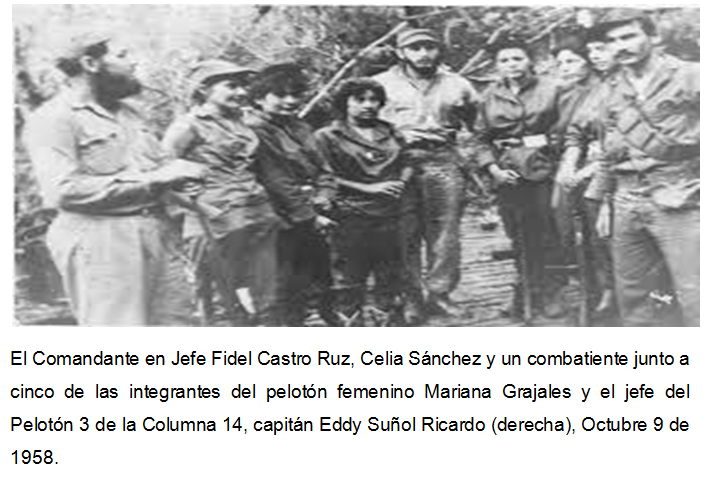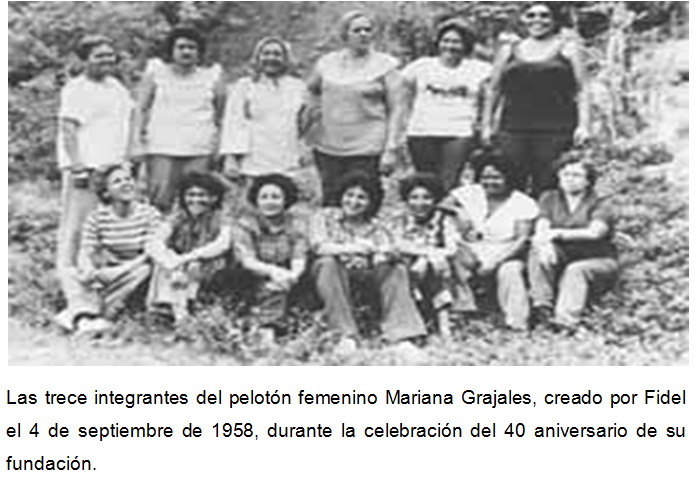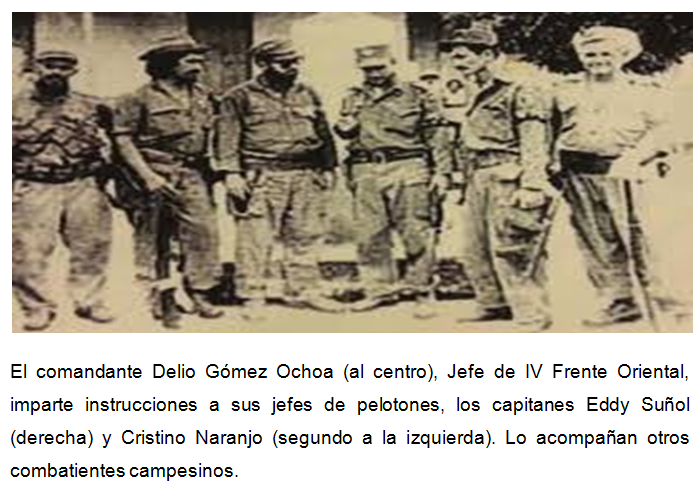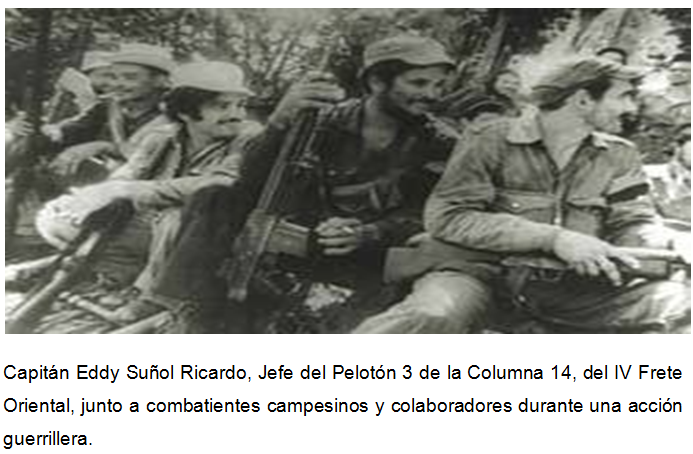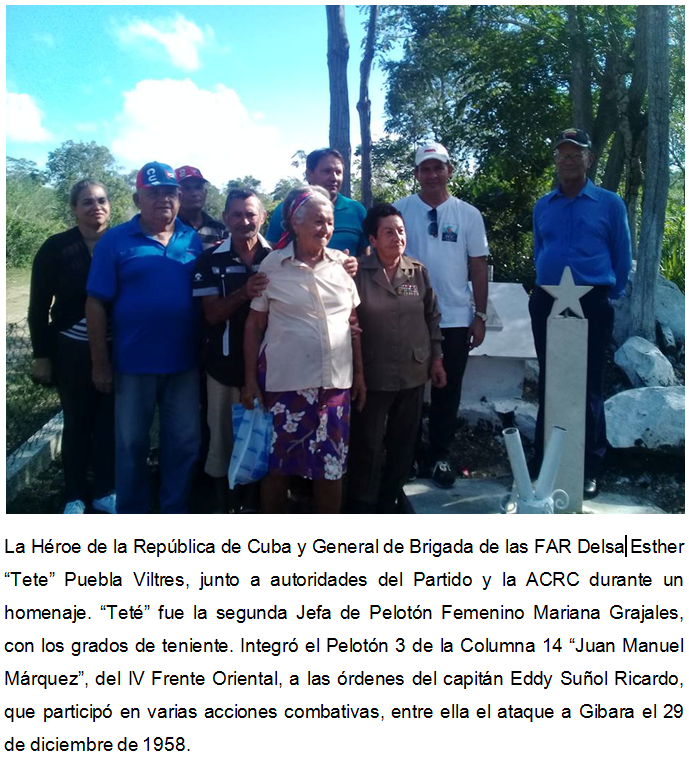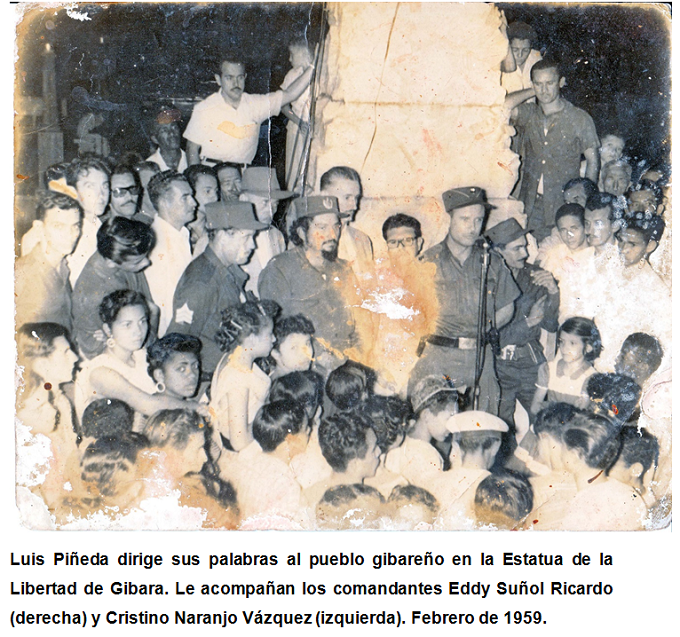BICENTENNIAL CITY
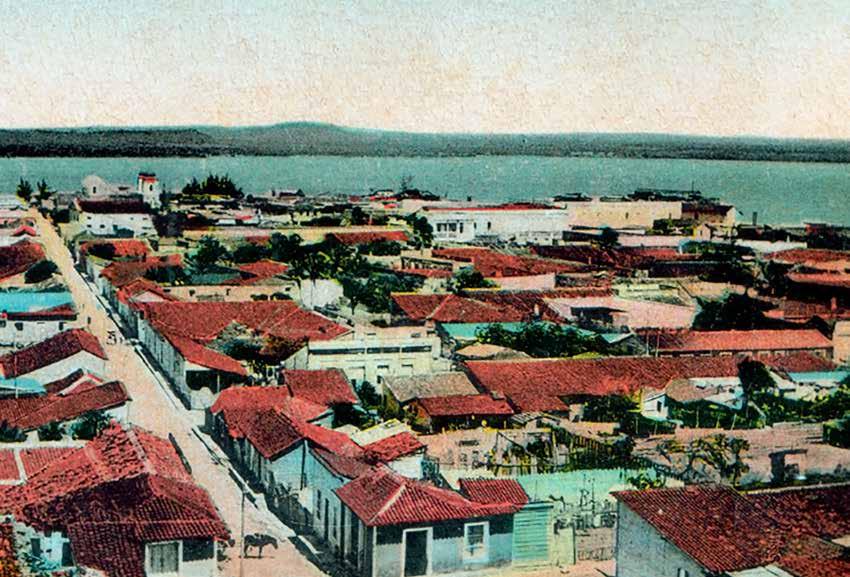
On the morning of January 16, 1817, the solemn ceremony of laying the first stone of the Fernando VII Battery -a military fortress facing the Atlantic Ocean, in the north of eastern Cuba-, marked the foundational moment of the town of Gibara. Francisco de Zayas y Armijo, Creole from Santiago de Cuba who held the position of Lieutenant Governor of Holguin, was the main promoter of the fortress and the founder of the new town. He laid out streets, distributed lands and attracted the first neighbors. On July 11, 1822, after multiple and prolonged negotiations, he achieved the opening of the port to the world market. Two years earlier, with his help, the first parish church had been established there.
The port and commerce were determining factors in the development of the urban center of Gibara. In accordance with the wealth they generated and the important agricultural production of the nearby lands, merchants and hacienda owners built warehouses and elegant residences. Strict urban planning regulations made harmony and order prevail in the constructions from early times. Even the homes of poor families did not lack aesthetic values.
From 1854, with the establishment of regular lines of steamships that transported merchandise and passengers along the coasts of Cuba, Gibara achieved a fast and stable communication with Havana, Santiago and other port cities of the Island, and also with Santo Domingo and Puerto Rico. Cargo ships communicated it with Europe and the rest of the world. From the beginning of the Ten Years' War, the Spanish military command fortified the port and its surroundings. Several forts and a masonry wall more than 2 km long were built.
Numerous Spaniards and their sympathizers that lived in Holguin and in other places of the region settled in Gibara, because they fled from the rigors of the conflict. For that reason, the territory acquired the nickname of La España Chiquita (Little Spain).
On May 26, 1871 Gibara obtained the title of Villa. Two and a half years later it was authorized to constitute its own municipality, which was ratified by Royal Order on June 26, 1875. During the ten years of the war, its population tripled and exceeded 7,500 inhabitants.
In 1883 gibareños and holguineros joined forces in a project of common benefit: the construction of a railroad to unite both cities. Ten years later the railroad was opened to public service.
On September 13, 1890 the beautiful Theater of the Spanish Casino was inaugurated, the only one of the colonial period that is still conserved in the province of Holguin.
At the beginning of the War of 1895, the local political panorama had suffered changes with respect to the previous conflict. On this occasion the incorporation of gibareños to the independence cause was greater. A network of collaborators helped the mambises from the interior of the Villa, from which, among other supplies, they obtained the necessary paper so that the newspaper El Cubano Libre could be printed. During the war, however, an electric plant was inaugurated for public service and the first telephones were installed, a fact that put it ahead of almost all the towns in the eastern part of the country.
On July 25, 1898, the Mambises entered the Villa. They were received with the chords of the Hymn of Bayamo executed by the local orchestra. From July 30 until the end of the war, Calixto García established his headquarters in Gibara. In August 1931 a group of revolutionaries commanded by Emilio Laurent arrived in the port to fight against the dictatorship of Gerardo Machado. Hundreds of Gibareans joined the expeditionaries, but the forces of the tyranny concentrated numerous troops and attacked the positions of the rebels by air, sea and land. After hard combats, the Machadist army entered the Villa, where they committed assassinations and imposed a cruel repression.
In the following years, unemployment increased. The resources extracted from the sea with nets and other artisan means, and the attention to the visitors, especially during the summer season, constituted a palliative to face it. Hundreds of gibareños left to other places in search of work. In 1953 the Day of the Absent Gibareño was instituted in an effort to sustain and revive the link between those who had left and those who remained in the town.
After Fulgencio Batista's coup d'état, the situation worsened, but this was not accepted passively. Three gibareños were with Fidel in the assault on the Moncada Barracks, and many others joined the struggle against the tyranny.
After the triumph of the Cuban Revolution in 1959, the economic and social panorama of Villa Blanca was transformed. Sources of employment were created, among which the Inejiro Asanuma spinning mill and the Alcides Pino shipyard stand out. The living standards of the population improved unquestionably. Numerous health, educational, cultural, sports and other social institutions were established.
In 2003 Gibara became the venue of the International Festival of Poor Cinema and in January 2004 its rich built heritage and the intangible cultural values that it treasures, determined that the historical urban center of the Villa reached the condition of National Monument, which it proudly holds today.
Attack on Gibara on December 29, 1958, by forces of the IV Simón Bolívar Eastern Front.
By: Yusbel Ferrer Gómez
The armed forces of Fulgencio Batista's dictatorship had a real network of small Rural Guard posts with one or two pairs of soldiers in small villages, as well as barracks of that corps located in sugar mills and other important towns with a dozen or more soldiers. The combatants of the 4th Front carried out attacks on some of these barracks. These actions took place mainly in the territory of the former municipalities of Puerto Padre, Bayamo, Holguin, Victoria de las Tunas, Camagüey and Gibara. The IV Eastern Front "Simon Bolivar", founded on November 4, 1958 in Mir, under the orders of its chief, the Commander of the Rebel Army Delio Gomez Ochoa, developed several combative actions in all the vast territory it occupied. The present work deals precisely with one of these military actions carried out by the 3rd Platoon of the 14th Column "Juan Manuel Márquez", of the 4th Front, commanded by Captain Eddy Suñol Ricardo. The attack on Gibara on December 29, 1958.
From the arrival of the rebel columns to the eastern plains, the towns began to lose importance for Batista's command and became a real headache. On the one hand, politically it was not convenient to abandon those villages and towns to the enemy. But at the same time, day by day the rebels were taking over the countryside and each time they had better weapons and a greater number of men, which made it extremely complex to supply those isolated garrisons. For the latter it was necessary to escort the vehicles that transported the necessary supplies. Many times these vehicles were subjected to rebel harassment.
The rebels resorted to very simple means to surrender the besieged forces. They would penetrate the village at night, get as close as possible to the garrison and occupy certain places trying to gain advantage of the terrain and from there they would open fire. The military responded and an exchange of fire was initiated where each side tried to show its resistance and the amount of park that each one had.
The capture of these small garrisons responded to a strategic plan elaborated by Fidel and which he explained in a letter dated October 8, 1958 to Juan Almeida: "After November 3 all your thoughts should be directed towards the preparation of the moment when we decide to isolate. And to besiege all the cities simultaneously".
The capture of these garrisons eliminated the possibility of using them in joint operations with troops of the Regiment 7 "Calixto Garcia", of the head city: Holguin. Large territories and long-suffering populations were definitively liberated. Also into the hands of the revolutionaries passed new redoubts with a great amount of material means such as transports, workshops, fuel, etc. In case the garrison surrendered, weapons and park could be obtained, which was very valuable and necessary.
When is it decided to attack Gibara?
After the attack and liberation of Puerto Padre, on December 24, 1958, Captain Eddy Suñol departed back to the Sierra de Gibara on the 27th and that night, the troops were fed a good meal of roast suckling pig, rice with chicken, wine and a few bottles of cognac.
The Direction of the IV Eastern Front "Simon Bolivar", decides to carry out an attack on the city of Gibara. For the fulfillment of this plan they proceeded to the grouping of diverse forces of the troops commanded by Captain Eddy Suñol. Due to the conditions of the besieged city, the forces of the dictatorship were grouped to try to achieve greater defensive power. They relocated to the Naval Post and the Balneario located about 40 meters away. As a park they had a 50 caliber machine gun and a 30 caliber machine gun, trying to maintain the surprise factor. On December 28, Suñol and his subordinates duly planned and organized the attack on Gibara, for which all the combat troops would be used, as well as the group of shotgunners, all under his command.
Who were the shotgunners and what role did they play in the guerrilla warfare developed by the Rebel Army in the last stage of the national liberation war?
Historical sources consulted indicate that in the area covered by the guerrilla front also fought a group of shotgunners who had been in the region since before its foundation; they numbered 286 men, who immediately subordinated themselves to the leadership of the Rebel Army. The mission of the shotgunner, so valuable in guerrilla warfare, has however been little publicized after the triumph of the Revolution. After the triumph of the Revolution on January 1st, 1959, shortly after, the already Commander Suñol synthetically referred to the work performed by these brave comrades who fulfilled their duties as guerrilla fighters with honor within the IV Eastern Front:
- The shotgunners were the quarry from which the troops were nourished.
- They served as a means of information to the troops, giving details about all enemy movements.
- They were the outposts that guarded the roads, as well as the public order in the liberated zones and were in charge of collecting the necessary supplies for the troops and transporting them to their destination.
- They went out on missions entrusted by the command to carry out sabotage, which consisted of blowing up bridges, cutting telephone wires, and even destroying railroad tracks.
- When the troops were on operations, they prepared transportation and solved the maintenance problem, gasoline.
- When an operation was carried out, most of the shotgunners accompanied the troops to fulfill the assigned missions, including combat.
- To harass the enemy when he moved where the operational troops were not present.
On the night of December 28, 1958, in El Tumbadero, Sierra de Gibara, Captain Eddy Suñol gave the pertinent orders for the attack on Gibara. Each chief took the course assigned to him and at midnight they left for Gibara, while the rebels awaited the fall of night and their slow advance.
How was the attack on Gibara on December 29, 1958 conceived and what did the Plan of Action consist of?
ATTACK ON GIBARA ON DECEMBER 29, 1958.
THE ACTION PLAN CONSISTED OF:
| ACTIONS | LEADER OF THE ACTION |
| 1-Take over the Police Station. | Captain Omar Iser Mojena |
| 2-Take over the Electoral Board. | Captain Emilio Perna |
| 3-Occupy the coastal areas between Céspedes and Ricardo Sartorio Streets. | Captain Raúl Castro Mercader. |
| 4-Occupy the coastline of Ronda de la Marina and Rabí, including Donato Mármol and Independencia streets. | Captain Eddy Suñol Ricardo con el pelotón de Las Marianas. |
When he was marching towards Villa Blanca, Suñol received instructions from Commander Delio Gómez Ochoa, Chief of the IV Front, through a messenger telling him not to attack Gibara, because it was necessary to keep the park to attack Holguin, and that these instructions emanated from Commander in Chief Fidel Castro Ruz. The truth is that it was impossible for Suñol to stop the attack, because as he said in the Verde Olivo Magazine in 1966:
"... the shots were about to start ringing and the chiefs had gone out to fulfill their missions. That is why we decided to continue, and soon after the combat began".
Around 11:00 PM the first rebel detachments penetrated the Gibarean population. Approximately at 12 PM fire was opened against the enemy positions, concentrated mainly against the Police Station, the Electoral Board, the Naval Post and the Spa. Immediately the forces led by Captain Suñol together with four of the Marianas and a group of shotgunners went into action.
Was the attack on Gibara successful?
In part yes. Although the rebels did not manage to take the city, they did take the Police Headquarters, where they seized weapons, park, gasoline, which was very necessary. In addition, a microwave car that was used for communications was seriously damaged.
At dawn on December 29th, the rebel troops withdrew from Gibara, in order to overcome the resistance of the enemy troops that were still resisting in a fairly protected position, with their backs to the sea. According to Suñol's own testimony to the Verde Olivo Magazine, in 1966: "... it would have taken two or three days of fighting, cutting off their water and all kinds of supplies to force them to surrender. As I had instructions not to attack Gibara and I had done it because I had no other way out, I decided to withdraw at dawn with a prisoner, cars, gasoline (...)".
After the retreat, Suñol and the troops were ambushed between Aguas Claras and Holguin, because he received instructions from Commander Delio Gomez, Chief of the IV Front, to be located in the town of Aguas Claras, to carry out the attack to Holguin. In this siege Suñol dedicated himself to draw up a new strategic plan for a second attack and capture of Gibara, which took place on January 1, 1959, very early in the morning. Another bloodshed was not necessary. Once they were informed of the tyrant's escape, the soldiers of the Naval Post and the Police Station agreed to unconditional surrender, laying down their arms in the presence of the rebel troops. The Electoral Board, the City Hall, the Spa, the Railroad Station and other places of interest were also occupied. Everything was already in the hands of the rebels. That day the Green Olive Tree walked freely for the first time through the streets of Gibraltar, the noise and the jubilation of the population that welcomed the rebels as they passed by was total, shouts of: Long live the 26th! Long live Fidel! Down with tyranny! Long live the Revolution! According to Suñol: "The first of January 1959, a glorious date (...) marks the beginning of a new life in our homeland. The war was over".
In the attacks on the towns carried out by the forces of the IV Simon Bolivar Front, the expertise achieved by these guerrillas was demonstrated. The enemy forces with the losses of these barracks were becoming isolated in the main urban centers. Finally, this front came to initiate the attack to Holguin on December 31, 1958 which we could consider as the culmination of these operations. In this city the bulk of the forces of the dictatorship in the region were located. The flight of the tyrant put an end to the siege of this important square.





